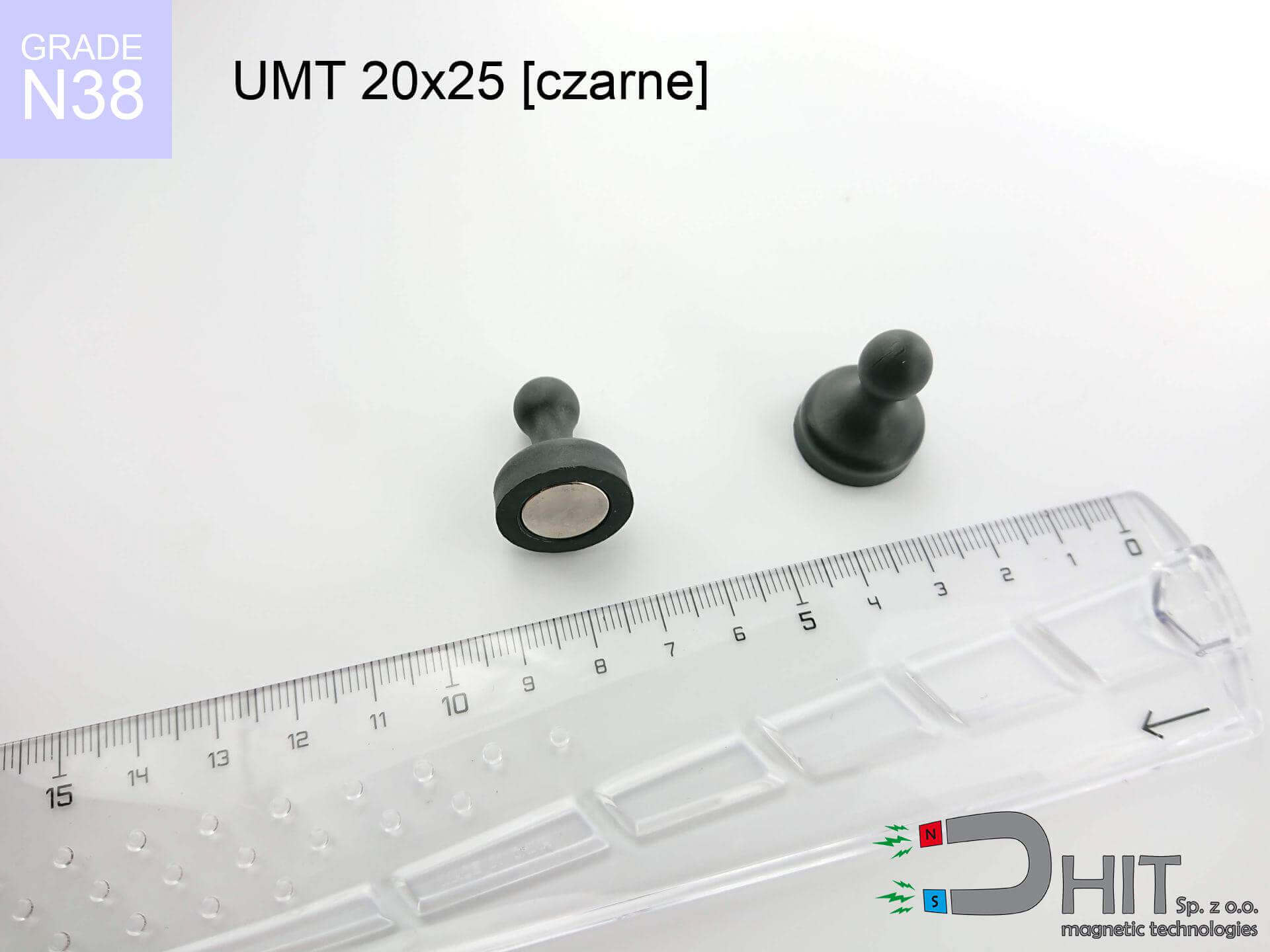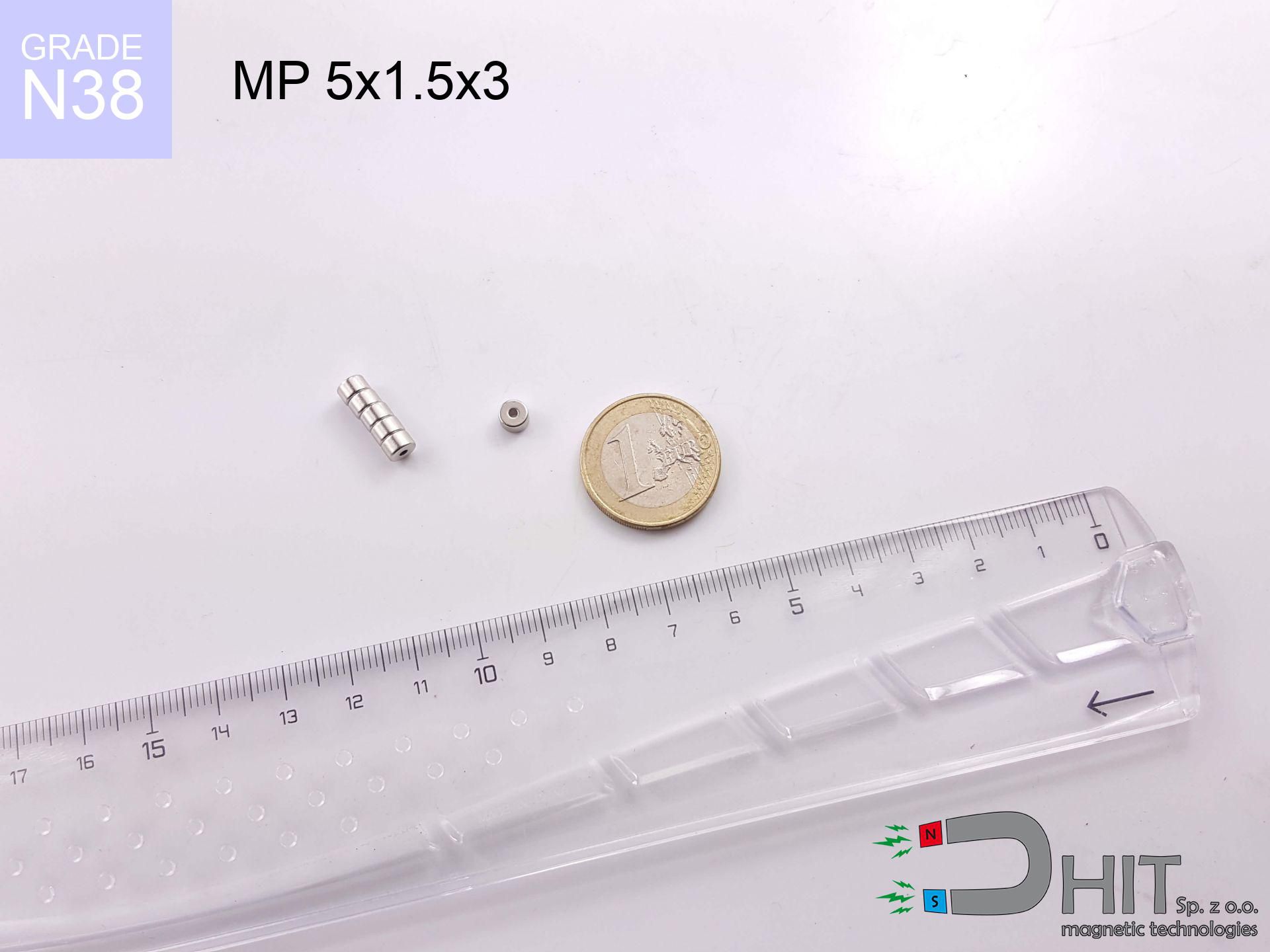SM 32x400 [2xM8] / N52 - magnetic separator
magnetic separator
Catalog no 130463
GTIN/EAN: 5906301813347
Diameter Ø
32 mm [±1 mm]
Height
400 mm [±1 mm]
Weight
2215 g
Magnetic Flux
~ 10 000 Gauss [±5%]
1266.90 ZŁ with VAT / pcs + price for transport
1030.00 ZŁ net + 23% VAT / pcs
bulk discounts:
Need more?
Pick up the phone and ask
+48 22 499 98 98
if you prefer let us know by means of
form
our website.
Strength and shape of magnetic components can be verified with our
our magnetic calculator.
Orders submitted before 14:00 will be dispatched today!
Technical of the product - SM 32x400 [2xM8] / N52 - magnetic separator
Specification / characteristics - SM 32x400 [2xM8] / N52 - magnetic separator
| properties | values |
|---|---|
| Cat. no. | 130463 |
| GTIN/EAN | 5906301813347 |
| Production/Distribution | Dhit sp. z o.o. |
| Country of origin | Poland / China / Germany |
| Customs code | 85059029 |
| Diameter Ø | 32 mm [±1 mm] |
| Height | 400 mm [±1 mm] |
| Weight | 2215 g |
| Material Type | Stainless steel AISI 304 / A2 |
| Magnetic Flux | ~ 10 000 Gauss [±5%] |
| Size/Mount Quantity | 2xM8 |
| Polarity | circumferential - 15 poles |
| Casing Tube Thickness | 1 mm |
| Manufacturing Tolerance | ±1 mm |
Magnetic properties of material N52
| properties | values | units |
|---|---|---|
| remenance Br [min. - max.] ? | 14.2-14.7 | kGs |
| remenance Br [min. - max.] ? | 1420-1470 | mT |
| coercivity bHc ? | 10.8-12.5 | kOe |
| coercivity bHc ? | 860-995 | kA/m |
| actual internal force iHc | ≥ 12 | kOe |
| actual internal force iHc | ≥ 955 | kA/m |
| energy density [min. - max.] ? | 48-53 | BH max MGOe |
| energy density [min. - max.] ? | 380-422 | BH max KJ/m |
| max. temperature ? | ≤ 80 | °C |
Physical properties of sintered neodymium magnets Nd2Fe14B at 20°C
| properties | values | units |
|---|---|---|
| Vickers hardness | ≥550 | Hv |
| Density | ≥7.4 | g/cm3 |
| Curie Temperature TC | 312 - 380 | °C |
| Curie Temperature TF | 593 - 716 | °F |
| Specific resistance | 150 | μΩ⋅cm |
| Bending strength | 250 | MPa |
| Compressive strength | 1000~1100 | MPa |
| Thermal expansion parallel (∥) to orientation (M) | (3-4) x 10-6 | °C-1 |
| Thermal expansion perpendicular (⊥) to orientation (M) | -(1-3) x 10-6 | °C-1 |
| Young's modulus | 1.7 x 104 | kg/mm² |
Elemental analysis
| iron (Fe) | 64% – 68% |
| neodymium (Nd) | 29% – 32% |
| boron (B) | 1.1% – 1.2% |
| dysprosium (Dy) | 0.5% – 2.0% |
| coating (Ni-Cu-Ni) | < 0.05% |
Environmental data
| recyclability (EoL) | 100% |
| recycled raw materials | ~10% (pre-cons) |
| carbon footprint | low / zredukowany |
| waste code (EWC) | 16 02 16 |
Other products
Strengths as well as weaknesses of Nd2Fe14B magnets.
Benefits
- They virtually do not lose strength, because even after 10 years the decline in efficiency is only ~1% (based on calculations),
- They do not lose their magnetic properties even under close interference source,
- In other words, due to the aesthetic finish of silver, the element looks attractive,
- The surface of neodymium magnets generates a maximum magnetic field – this is a distinguishing feature,
- Through (adequate) combination of ingredients, they can achieve high thermal strength, enabling action at temperatures reaching 230°C and above...
- Possibility of accurate shaping and adapting to individual needs,
- Versatile presence in advanced technology sectors – they serve a role in mass storage devices, electromotive mechanisms, advanced medical instruments, and industrial machines.
- Relatively small size with high pulling force – neodymium magnets offer impressive pulling force in small dimensions, which allows their use in miniature devices
Limitations
- They are prone to damage upon heavy impacts. To avoid cracks, it is worth protecting magnets in special housings. Such protection not only protects the magnet but also increases its resistance to damage
- When exposed to high temperature, neodymium magnets experience a drop in power. Often, when the temperature exceeds 80°C, their strength decreases (depending on the size and shape of the magnet). For those who need magnets for extreme conditions, we offer [AH] versions withstanding up to 230°C
- Due to the susceptibility of magnets to corrosion in a humid environment, we suggest using waterproof magnets made of rubber, plastic or other material stable to moisture, in case of application outdoors
- Limited ability of creating threads in the magnet and complicated forms - recommended is a housing - magnetic holder.
- Potential hazard resulting from small fragments of magnets can be dangerous, when accidentally swallowed, which is particularly important in the context of child health protection. It is also worth noting that small elements of these products are able to be problematic in diagnostics medical after entering the body.
- Higher cost of purchase is a significant factor to consider compared to ceramic magnets, especially in budget applications
Lifting parameters
Highest magnetic holding force – what it depends on?
- using a plate made of mild steel, serving as a magnetic yoke
- with a cross-section no less than 10 mm
- with a plane free of scratches
- without any clearance between the magnet and steel
- for force applied at a right angle (pull-off, not shear)
- at temperature approx. 20 degrees Celsius
Practical aspects of lifting capacity – factors
- Space between magnet and steel – every millimeter of separation (caused e.g. by veneer or dirt) drastically reduces the magnet efficiency, often by half at just 0.5 mm.
- Force direction – catalog parameter refers to pulling vertically. When attempting to slide, the magnet holds significantly lower power (often approx. 20-30% of maximum force).
- Wall thickness – the thinner the sheet, the weaker the hold. Part of the magnetic field passes through the material instead of converting into lifting capacity.
- Steel grade – the best choice is pure iron steel. Hardened steels may attract less.
- Surface quality – the smoother and more polished the surface, the larger the contact zone and stronger the hold. Roughness creates an air distance.
- Thermal conditions – neodymium magnets have a negative temperature coefficient. At higher temperatures they lose power, and in frost gain strength (up to a certain limit).
Lifting capacity was measured with the use of a smooth steel plate of suitable thickness (min. 20 mm), under perpendicular detachment force, whereas under shearing force the lifting capacity is smaller. Moreover, even a slight gap between the magnet and the plate lowers the holding force.
H&S for magnets
Operating temperature
Standard neodymium magnets (N-type) lose magnetization when the temperature goes above 80°C. This process is irreversible.
Threat to navigation
Be aware: rare earth magnets generate a field that interferes with precision electronics. Maintain a safe distance from your phone, tablet, and navigation systems.
Caution required
Exercise caution. Neodymium magnets attract from a distance and connect with massive power, often faster than you can move away.
Adults only
NdFeB magnets are not toys. Accidental ingestion of a few magnets may result in them connecting inside the digestive tract, which constitutes a severe health hazard and necessitates immediate surgery.
Do not drill into magnets
Machining of neodymium magnets carries a risk of fire hazard. Neodymium dust oxidizes rapidly with oxygen and is difficult to extinguish.
Fragile material
NdFeB magnets are ceramic materials, which means they are prone to chipping. Collision of two magnets leads to them cracking into shards.
Cards and drives
Equipment safety: Strong magnets can ruin payment cards and sensitive devices (heart implants, hearing aids, mechanical watches).
Medical interference
Individuals with a ICD have to maintain an absolute distance from magnets. The magnetic field can interfere with the functioning of the implant.
Bone fractures
Big blocks can break fingers in a fraction of a second. Never place your hand betwixt two attracting surfaces.
Allergy Warning
Warning for allergy sufferers: The nickel-copper-nickel coating consists of nickel. If an allergic reaction occurs, immediately stop working with magnets and wear gloves.

![Magnetic bar SM 32x400 [2xM8] / N52 Magnetic bar SM 32x400 [2xM8] / N52](https://cdn3.dhit.pl/graphics/banners/magnet.webp)
![SM 32x400 [2xM8] / N52 - magnetic separator](https://cdn3.dhit.pl/graphics/products/sm-32x400-2xm8-led.jpg)



![SM 25x225 [2xM8] / N52 - magnetic separator SM 25x225 [2xM8] / N52 - magnetic separator](https://cdn3.dhit.pl/graphics/products/sm-25x225-2xm8-lod.jpg)

